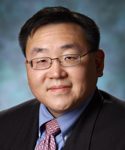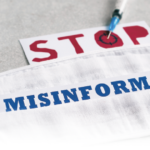“No!” she screamed.
My niece just finished her first semester as a freshman at the University of St. Andrews in Scotland. If the institution sounds familiar to you, it may be because you remember a particularly famous graduate—William Windsor, who sometimes goes by his formal titles: Duke of Cambridge and heir to the British throne.
When COVID-19 was first declared an epidemic, her institution informed students that classes would continue, business as usual. After four of her classmates were diagnosed with COVID-19, however, the school entered crisis mode. Students were informed the neighboring town might go into lockdown. They could not guarantee school services would continue. Expatriate students who had the means to leave should do so, immediately.
Evacuating my niece from Scotland was only part of the problem; there was also the small matter of where to evacuate her to. After weeks of negotiation with my parents, requiring Middle East-level negotiating skills, my sister had finally prevailed upon my parents to leave their condominium in New York City and temporarily relocate to her home on Long Island.
These plans did not take into account the possibility of having my niece move back simultaneously. Given the situation at her college, we assumed my niece could be an asymptomatic carrier of SARS-CoV-2. If she wasn’t now, we assumed she would be; all of her friends were also discharged from their respective colleges, and there was likely only so long she could be back at home before she would start getting roped into coronavirus parties—yes, that is a thing.1
We decided it would be safest to have her fly to Baltimore to stay with me for the 14 days it might take for her to become symptomatic or clear the viral infection. Because I am a healthcare provider and my niece is a college student, we were essentially cohorting the two highest risk family members in the same household to improve my parents’ chance of riding out the pandemic unscathed.
Knowing my niece was staying with me completely changed my outlook on life. Beforehand, I was relatively casual about everything, smiling benignly at people in the supermarket who seemed to be preparing for a nuclear holocaust. After it became clear that my niece might be staying with me, I became one of those people.
I descended on the local grocery stores like the Furies, grabbing at frozen chicken fingers and dried beans wherever I could find them. And cleaning products!—“This is not a time for organic,” a fellow Doomsday prepper muttered under her breath as she passed by, while maintaining a socially respectable distance. I also started to build a Jenga tower of paper products in my basement: How much toilet paper do teenagers go through, anyway?
While I was busy scrubbing my house with the most anti-organic cleanser I could lay my hands on, my niece had landed in Heathrow, where she waited to board her connecting flight to Dulles International Airport. While she was milling about, she walked into a sundries shop, where she noted a lone bottle of Purell, sitting in the display case. She started walking toward it, when someone shouted at her: “No!” Coming up fast behind her was a mother, young child in tow, who was homing in on the bottle of Purell like a heat-seeking missile. She ran past my niece, grabbed the bottle, put a squirt of that clear elixir in the hands of her toddler and then made her way to the cashier to pay for her prize.



